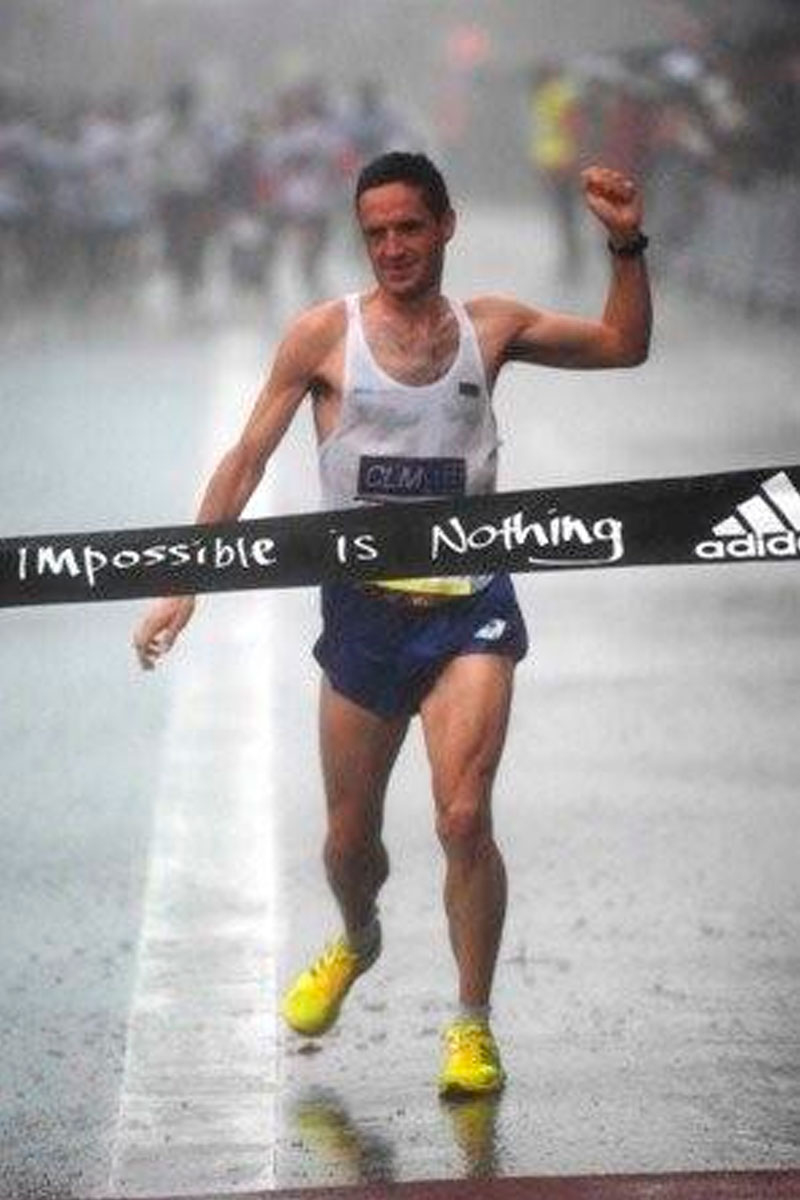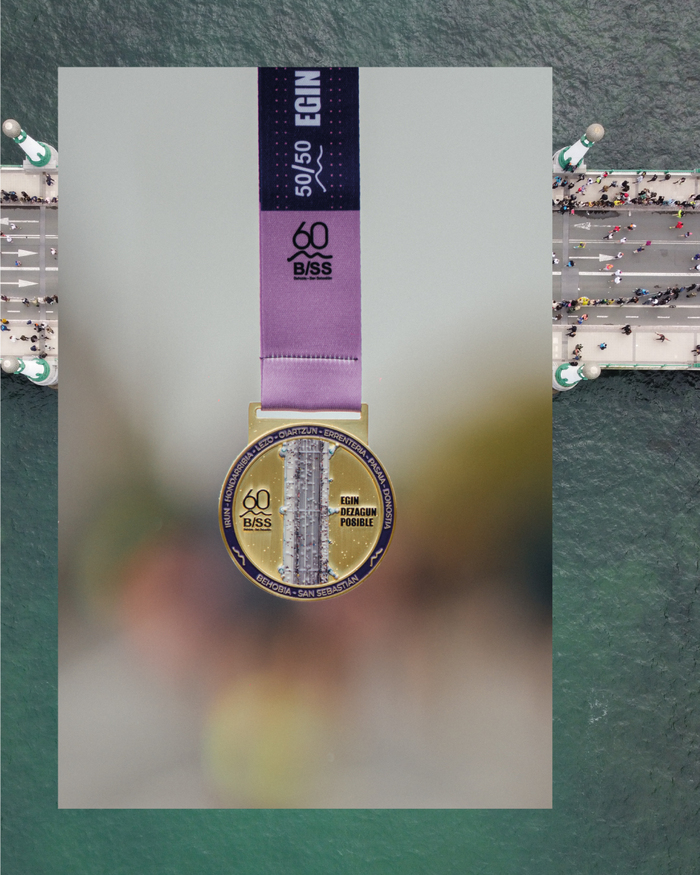The Behobia - San Sebastián is more than just a race. Above all, the Behobia-San Sebastián is a feeling, which has been built up over more than 100 years thanks to the effort, sensations and enthusiasm of thousands of athletes like you and the hosting of a land that understands sport, that values it and knows how to enjoy it like few others.

In the Behobia race, you will experience emotions that you probably haven't felt in other races. You'll feel the excitement from early in the morning while riding the trains full of fans heading towards the border. You'll continue to feel it at the starting line and until you reach the finishing line of San Sebastián Boulevard while running the last stretch between two tight walls of admirers.
You will leave behind you the special atmosphere of the starting line in the Irun neighborhood of Behobia, which is narrow but fast-moving and lively, those long minutes warming-up and the camaraderie with your fellow athletes, the facilities that will have made things much easier and more pleasant for you, the excitement at the start of the wheelchair or hand-bike race, the streets of Irun packed with people, the ascent to Upper Gaintxurizketa, which may seem like one of the Pyrenean stages of the Tour de France.
From there, a new route awaits, because in the 50th edition of the BSS we recovered the initial route, established in 1919, that ran along the N-I road, with a more uniform and, more importantly, safer route that offers better access to the different services. After this first experience in 2014, given the excellent reception, we expect this route to continue for many years, with new references like the bustling stretch through the centre of Renteria and the short ascent to Upper Capuchinos, and the stretch through Antxo or the new ascent to Upper Miracruz, from where the applause and cheers of encouragement now form a continuous passage to the finish; a human passage that will move you, especially when you start your final descent to the neighborhood of Gros and later to the promenade along Zurriola beach and the finish line; a vibrant and spectacular arrival you will never forget, in the heart of San Sebastián.

You can see for yourself that the Behobia circuit is exciting and appealing.
You will understand why every year you are more and better participants and you will appreciate our aim to improve every year.
The early days
1919-1926
The race was delightful, and represented a real sporting event admired by thousands of people."
Despite appearances, the above paragraph does not refer to the most recent edition of the Behobia - San Sebastian. It is merely an extract from the account printed in the independent newspaper "El Pueblo Vasco" about the first edition of the race, held on 30 March 1919,and won by the legendary Juan Muguerza, from the Basque town of Elgóibar, who set a time of 1h 17m 50s, ahead of twenty or so heroic athletes.
The same report in "El Pueblo Vasco" reveals a number of curious details as to the organisation of the event:
Loinaz, together with the timekeeper and judge, in the car of Mr Olasagasti and Mr Ambille... the delegate of the Gipuzkoa Athletic Federation, Mr Gabriel María Laffitte, with Dr Asuero and Dr Uzcanga in their car..."
The article continues with a little period flavour:
The noted banker Mr Andrés Peña donated a five dollar gold coin, for the first runner to pass by his property in Ategorrieta ‘Toki Alaia’ (after the Alto de Miracruz pass) (…) excellent organisation, despite complaints from the public, who did little to cooperate."

Following the success of the first edition, a further seven were held, each in consecutive years. The 1920 edition ended at the Atocha football stadium, "courteously made available by Real Sociedad".
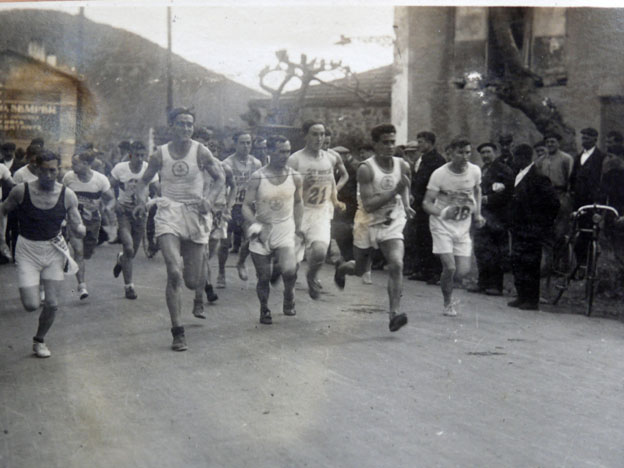
Frenchman Henri Dalière topped Gaintxurizketa in 27'55",with Muguerza twelve seconds behind; he completed the route without suffering fatigue, and using the breathing method that his body demanded. He gave many a sense of tiredness ..."
In the third edition the finishing line was once again at Atocha. And it was once again won by France's Dalière, although he was unable to improve on his record time.
The fourth B/SS was completed in an outstanding time which allowed for "a picturesque caravan of 'suiveurs' in cars, on motorbikes, bicycles and other wheeled contraptions...", according to the report by Raffles in "El Pueblo Vasco"
The fifth edition, in 1923 was won for the second time by Serafín Ulecia, just two seconds off Dalière's record. This edition involved six athletes from the other side of the border, three from Biarritz Olympique and three from Aviron Bayonnais.
In 1924 the starting line was moved, to align the 20 kilometre mark with the Gran Kursaal casino. Juan Manuel Azpiroz, from Aya and a member of the C.D. Añorga sports club, claimed an easy victory. According to press reports, there were huge crowds in Irun, Rentería, Pasajes and at the finishing line.
In 1925 references to the organisation of what was by this point the 7th Behobia-San Sebastián include the mention:
The lack of races on the calendar in Gipuzkoa this year has led to a decline in amateur running which is of great concern for the sport."
No one could keep up with Bilbao's Salvidegoitia. Fidel Acebal, a regular in the race and runner-up on several occasions, had problems with his footwear: "he had to dispose of his running shoes halfway through the race but nonetheless finished second."
The prize of a watch offered by Irungo-Atsegiña to the first runner to pass their premises, was claimed by Cialceta, who was later exhausted. The same had happened in previous years, with runners "burning themselves out" to win the prize. The following year the Federation banned special prizes during the race.
The last edition of this initial era was held on 28 March 1926. This was the eighth. The organisers went looking for athletes from further afield, with the aim of increasing its prestige. And along with runners from Bizkaia, major winners from the previous year, they brought in Dionisio Carreras, from Zaragoza, a leading marathon runner who finished ninth in the 1924 Paris Olympics. The finishing line was once again at Atocha. The press report on the race read as follows:
The runners Carreras, Campo, Salvidegoitia, Ruiz and Cialceta passed through a wall of people at the 7'38'' mark at the Plaza San Juan in Irun. In Buenavista, Bilbao's Campo caught up with the Aragonese runner, topping the Alto de Miracruz pass in 63'19'', six seconds ahead of Carreras. The crowds were huge. There was a titanic struggle between Campo and Carreras, with the latter finally pulling away from his tough rival, reaching the finishing line to a huge ovation, with plenty still left in the tank.
That victory marked the brilliant conclusion of the first era of the Behobia.
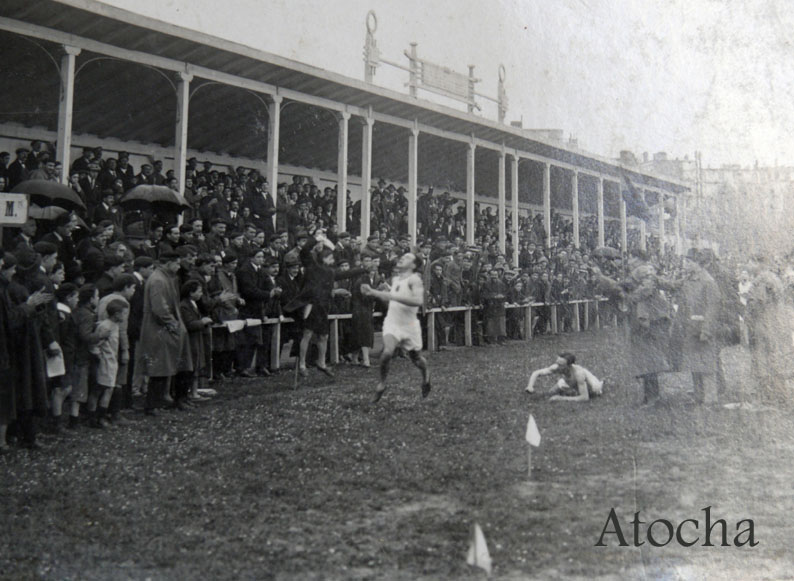
Second era
The relay race
On 29 March 1936 the Behobia - San Sebastián was revived in a different format: a relay race for teams of four runners each of whom would run five kilometres.
The first edition was won by Euzko-Gaztedi from Zarautz, whose team of Soraluze, Laurgain, Arritokieta and Unzueta took 1h 07m 29s.
The military coup of 1936 and the ensuing war disrupted the B/SS until 13 April 1941, when it was again held and won by San Sebastian's Real Sociedad football club. The team comprising José Beloqui, Luis García, Miguel Sucunza and Emilio Navarro took 1h 09m 28s.
The next year Real Sociedad won again in the race held on 5 April 1942, setting a time of 1h 10m 07s.
It was not until 1949 that there was to be a twelfth edition, the third relay race. Teams entered from France, and it was Club Athletique Municipalde Bordeaux that won, setting a new record time of 1h 05m 32s.
There was a further interruption up until 13 May 1951, when the race was won by the team from Association Sportive Montferrandaise, in 1h 5m 19s, followed by C.A.M. Bordeaux and Real Sociedad.
It was not until 1963, coinciding with the celebration of the 150th anniversary of the demolition of the city walls around San Sebastian, that the B/SS was run again. The race represented a huge triumph for the military team C.A. Jaizkibel, who set an impressive record: 1h 01'26''.
Modern era
The people's race
On 30 March 1919, Juan Muguerza, claimed victory in the first Behobia - San Sebastián, an event which over time would become the most important of all those organised by the C.D. Fortuna sports club, and one of the leading fixtures on the European calendar at this distance.
But if there is one year that serves as a milestone in the recent history of C.D. Fortuna and of the race itself, then that would be 1979. Pancho Gómez, a veteran athlete, member and former board member at the Club, ably seconded by his friend Remigio Tellería, suggested that the young board should revive a race which had almost faded in the memory: the return of the Behobia-San Sebastian, which by then had been raced only fourteen times in 45 years (1919-1963).
The 1979 edition - number 15 - had barely a thousand participants, but at the time that represented a success as huge as it was unexpected. The finishing line was set on Calle Igentea, at the end of the Boulevard and beyond the town hall building, where a rudimentary podium was set up to hand out the trophies. The judges had a hard time of it recording all the athletes' times by hand.
A few years later, given the constant increase in the number of participants, the finishing line was shifted to the Boulevard itself, on its former layout alongside the Old Town. Ingenuity was called for in creating a system of arrival lanes, with the times being recorded at the start and the race numbers at the end. Everything was drawn up by hand, including the final placings, until the dawn of the computer era in the mid-1980s. These were the years of the first ‘King of the Behobia’: Madrid's Alfonso Álvarez Valera, five-time winner between 1981 and 1987.
He was followed by such figures as the famed Diego García, from Azkoitia winner in 1992 and 1994, and the other ‘King’, again from Madrid Alberto Juzdado, who claimed five victories between 1995 and 2004. His remains the fastest time ever: 59 minutes and 19 seconds, in 1996. That same year, a sensational record-breaking edition, Rocío Ríos set the women's record of 1:08:54.
1995 was the last of the outstanding series of runs by María Luisa Irizar,from Andoain, more than worthy of her title as the only ‘Queen of the Behobia’.She amassed no fewer than seven victories, in an impressive winning streak which began in 1980.
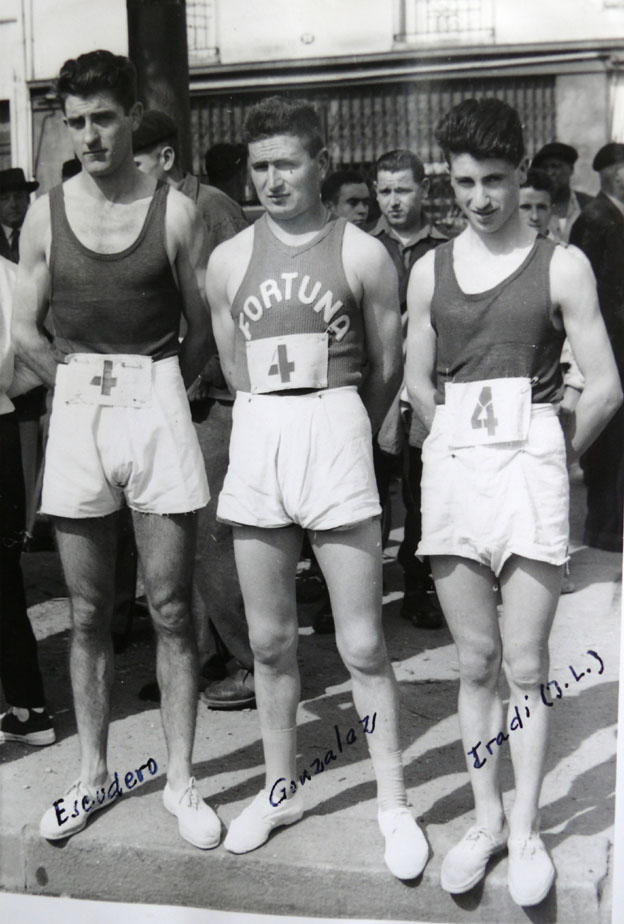
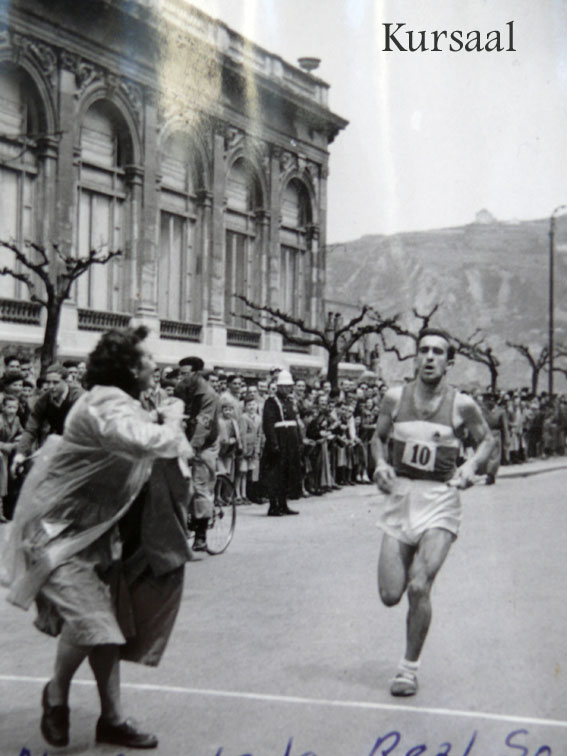
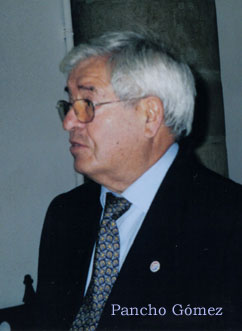
Mention should also be made of such other race greats as Peio Garin and above all his brother Juan Mari, winner in 1980, 1988 and 1990, and a regular fixture in the leading pack; and José Miguel Irazu, winner of the first B/SS in the modern era, in 1979.
In 1997 and 1998 the Boulevard was closed for rebuilding work, and the Behobia set up its finishing line on Paseo de la República Argentina, alongside the River Urumea, despite a lack of space since the number of participants continued to grow. The event returned to the Boulevard in the year 2000, and has remained there ever since.
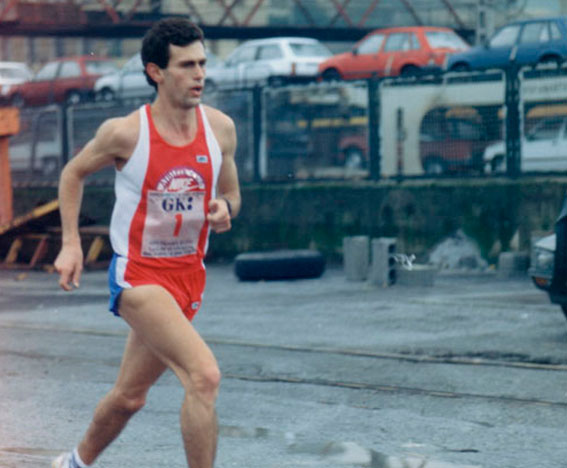


Following two failed attempts in 2000 and 2001, effective timekeeping by means of personal chips was achieved in the 2002 edition, using the Championchip system. Each runner has ever since had their real race time recorded. This meant a change for the B/SS, and in particular the start, which no longer presented any great problem: there was no more rushing, pushing, and the traditional nerves and hurry to start as soon as possible.
Through its continuous growth and improvements, the Behobia - San Sebastian has become a pre-eminent event in amateur athletics, while also giving rise to a great many associated competitions, and helping to build interest in the sport.
In 2002 there were a total of 11,000 participants, for the first time taking up every available place, with hundreds of runners missing out. Over subsequent years the registration places have all been subscribed, with numerous athletes unable to take part. In 2014 there were a total of 30,000 participants, a figure which has since grown each year.
The route, the supportive atmosphere, the warmth of a knowledgeable and always numerous crowd, a wonderful finishing line and great organisation, are unquestionably the keys to the yearly success of this outstanding race.
